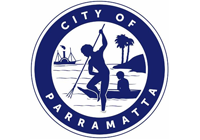City of Parramatta
Resident workers - Method of travel to work - All industries
Maximising access to employment is a key objective in any economic development strategy. Understanding the modes of transport the City of Parramatta's local resident workers use (either within or outside the local area), informs decision-makers about the effectiveness of transport modes, routes and availability of local public transport.
There are a number of reasons why people use different Modes of Transport to get to work including:
- The availability of affordable and effective public transport options between place of residence and place of work;
- The number of motor vehicles available within a household; and
- The travel distance to work, which for example, can allow people to walk or bicycle to their place of employment.
Method of Travel to Work data should be viewed in conjunction with resident place of work for a clearer picture of where working residents are employed.
Data source
Australian Bureau of Statistics (ABS) – Census 2016 & 2021 – by method of travel
Select industry:
Current benchmark:
| Resident workers method of travel to work | |||||||||
|---|---|---|---|---|---|---|---|---|---|
| City of Parramatta | 2021 | 2016 | Change | ||||||
| Main method of travel | Number | % | New South Wales% | Number | % | New South Wales% | 2016 - 2021 | ||
| Car, as driver | 36,202 | 29.4 | 43.4 | 54,770 | 51.4 | 57.8 | -18,568 | ||
| Car, as passenger | 2,951 | 2.4 | 3.2 | 3,905 | 3.7 | 4.3 | -954 | ||
| Train | 6,820 | 5.5 | 2.8 | 22,946 | 21.5 | 11.2 | -16,126 | ||
| Bus | 1,943 | 1.6 | 1.1 | 6,237 | 5.9 | 4.4 | -4,294 | ||
| Ferry | 49 | 0.0 | 0.1 | 136 | 0.1 | 0.2 | -87 | ||
| Tram | 21 | 0.0 | 0.0 | 26 | 0.0 | 0.1 | -5 | ||
| Truck | 379 | 0.3 | 0.7 | 605 | 0.6 | 1.0 | -226 | ||
| Motorbike/Motor scooter | 411 | 0.3 | 0.4 | 552 | 0.5 | 0.6 | -141 | ||
| Bicycle | 304 | 0.2 | 0.4 | 453 | 0.4 | 0.7 | -149 | ||
| Taxi/Other | 185 | 0.2 | 0.2 | 166 | 0.2 | 0.2 | +19 | ||
| Other - multiple methods | 553 | 0.4 | 0.5 | 990 | 0.9 | 1.2 | -437 | ||
| Walked only | 2,413 | 2.0 | 2.5 | 3,760 | 3.5 | 3.9 | -1,347 | ||
| Worked at home | 54,036 | 43.9 | 31.0 | 3,652 | 3.4 | 4.8 | +50,384 | ||
| Did not go to work | 16,250 | 13.2 | 13.2 | 7,569 | 7.1 | 8.7 | +8,681 | ||
| Not stated | 524 | 0.4 | 0.5 | 819 | 0.8 | 1.0 | -295 | ||
| Total | 123,041 | 100.0 | 100.0 | 106,586 | 100.0 | 100.0 | +16,455 | ||
Source: Australian Bureau of Statistics, Census of Population and Housing 2016 and 2021. Compiled and presented by .id (informed decisions) Please refer to specific data notes for more information | |||||||||


Dominant groups
In 2021, there were 8,784 resident workers who caught public transport to work (train, bus, tram or ferry) in the City of Parramatta, compared with 39,943 who drove in private vehicles (car – as driver, car – as passenger, motorbike, or truck).
Analysis of the method of travel to work of the resident workers in the City of Parramatta shows that 7.1% used public transport, while 32.5% used a private vehicle, compared with 4.0% and 47.8% respectively in New South Wales.
The major differences between the method of travel to work of the resident workers in the City of Parramatta and the New South Wales workforce were:
- A smaller percentage of resident workers who travelled by car, as driver (29.4% compared to 43.4%)
- A larger percentage of resident workers who worked at home (43.9% compared to 31.0%)
- A larger percentage of resident workers who travelled by train (5.5% compared to 2.8%)
- A smaller percentage of resident workers who travelled by car, as passenger (2.4% compared to 3.2%)
Emerging groups
The largest changes in the method of travel to work of the resident workers in the City of Parramatta between 2016 and 2021 were:
- Worked at home (+50,384 resident workers)
- Car, as driver (-18,568 resident workers)
- Train (-16,126 resident workers)
- Did not go to work (+8,681 resident workers)
